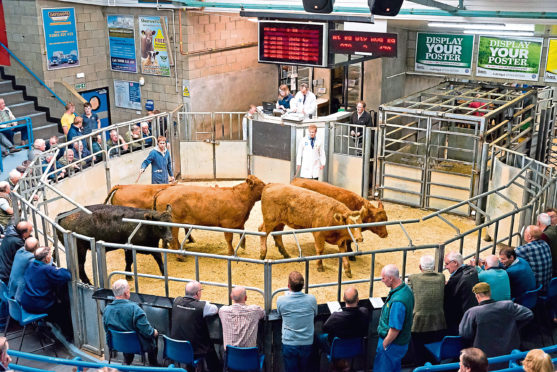Scottish prime cattle prices have risen by 5% in the last six weeks but are still 5% lower than this time last year, according to Quality Meat Scotland (QMS).
On the numbers front, meanwhile, a significant increase in heifer slaughterings over the last quarter has kept the total kill around the same level as in 2018, balancing a decline in steer numbers.
Supplies started to tighten again during April, although the volume of beef available was helped by a 3-4kg per animal rise in carcase weights.
However this isn’t a particularly positive move, according to QMS director of economics services, Stuart Ashworth, who said a higher number of steers than normal will now be falling outside their ideal retail weight limit.
Weekly abattoir throughputs across the UK, having been higher during January and February than in 2018, have also tightened recently.
“During April, the UK weekly kill of prime cattle was 1% lower on the year,” said Mr Ashworth, adding that April was also the first month in 2019 when UK beef production fell below last year’s levels.
Forecasting that this tightening of prime cattle numbers is likely to continue for the foreseeable future, Mr Ashworth said calf registrations in Scotland were continuing to trail last year’s levels.
This is despite 2018 registrations being 2.5% lower than in 2017, which was 0.25% lower than in 2016.
While Scottish producer prices remain 5% below 2018 figures, Irish producers are currently receiving 8% less than a year ago.
This compares with average primestock prices across Europe currently running 3% lower than in 2018.
“Contributing to the decline in the Irish producer price is the considerable increase in slaughter volumes,” said Mr Ashworth.
“So far in 2019, the Irish have slaughtered 6% more cattle than a year ago with young bull numbers increasing by 19% and heifer slaughterings up 11%.”
Recently, however, these levels of increase have dropped a little, triggering the start of a strengthening of prices.
Mr Ashworth said: “Like Scotland, Irish prime cattle numbers are likely to tighten throughout the year, however, helped by a 35% rise in live cattle exports so far this year.”
